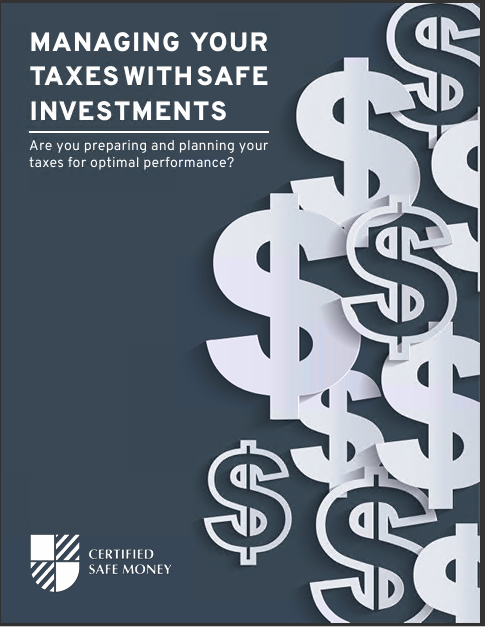Key Takeaways:
- Understanding Risk Management: Both fixed annuities and bonds offer unique benefits for managing risk in an investment portfolio, each catering to different investor needs.
- Comparing Returns and Security: Fixed annuities provide guaranteed returns with less market exposure, while bonds can offer higher yields with varying levels of risk.
Weighing Your Investment Options: Fixed Annuities vs. Bonds for Risk Management
When planning for a secure financial future, managing risk is a critical aspect of any investment strategy. Two popular options for risk management are fixed annuities and bonds. Each comes with its own set of advantages and potential drawbacks. Understanding these can help you make informed decisions about which option aligns best with your financial goals and risk tolerance.
Fixed Annuities: Stability and Predictable Income
What Are Fixed Annuities?
Fixed annuities are insurance products that provide a guaranteed rate of return for a specified period. They are designed to offer a steady income stream, often used as a retirement income source. Investors pay a lump sum or make a series of payments to the insurance company, which then makes periodic payments back to the investor.
Benefits of Fixed Annuities
One of the primary benefits of fixed annuities is their predictability. Because they offer a guaranteed rate of return, investors can plan their finances with a clear understanding of the income they will receive. This makes fixed annuities particularly attractive to retirees or those nearing retirement who seek a stable income without exposure to market volatility.
Additionally, fixed annuities often come with tax-deferred growth. This means that the interest earned on the annuity is not taxed until it is withdrawn, allowing the investment to grow more efficiently over time. This tax deferral can be particularly advantageous for individuals in higher tax brackets during their working years, who anticipate being in a lower tax bracket during retirement.
Another significant benefit is the potential for customization. Fixed annuities can be tailored to meet individual needs, with options for different payout schedules, such as lifetime income, a specified period, or even joint annuities that continue to pay out as long as either spouse is alive. This flexibility allows investors to choose a product that aligns closely with their financial plans and retirement goals.
Drawbacks of Fixed Annuities
However, fixed annuities are not without their downsides. One major drawback is the potential for lower returns compared to other investment options. The guaranteed rate of return on a fixed annuity is typically lower than what could be earned through other investments, such as stocks or bonds. This conservative approach to growth means that while the risk is minimized, so too are the potential gains.
Furthermore, fixed annuities can come with high fees and surrender charges if you need to access your money before the end of the contract term. These fees can erode the overall returns and make it costly to withdraw funds prematurely. It’s essential to read and understand the terms of the annuity contract thoroughly to avoid unexpected charges.
Liquidity is another concern. Fixed annuities often lock up your investment for a considerable period, which may limit your ability to respond to financial emergencies or opportunities. This lack of flexibility can be a significant drawback for some investors, particularly those who might need to access their funds quickly.
Bonds: Balancing Risk and Reward
What Are Bonds?
Bonds are debt securities issued by corporations, municipalities, or governments to raise capital. When you purchase a bond, you are essentially lending money to the issuer in exchange for periodic interest payments and the return of the bond’s face value at maturity. Bonds can vary significantly in terms of their risk and return profiles, depending on the issuer and the terms of the bond.
Benefits of Bonds
Bonds offer a variety of benefits, including the potential for higher returns compared to fixed annuities, especially in the case of corporate or municipal bonds. They also provide regular income through interest payments, which can be particularly beneficial for retirees or income-focused investors.
Moreover, bonds come in various types and risk levels, allowing investors to choose options that align with their risk tolerance. Government bonds, for example, are generally considered low-risk, while corporate bonds can offer higher yields with corresponding higher risk. This diversity means that investors can build a bond portfolio that matches their specific risk and return preferences.
Another advantage of bonds is their liquidity. Unlike fixed annuities, bonds can be sold on the secondary market, providing investors with the flexibility to access their funds if needed. This liquidity can be particularly valuable in managing cash flow and responding to changing financial circumstances.
Drawbacks of Bonds
Despite their benefits, bonds also carry certain risks. Interest rate risk is a significant concern; when interest rates rise, the value of existing bonds typically falls. This inverse relationship can impact the market value of bonds, particularly those with longer maturities.
Additionally, there is credit risk, which refers to the possibility that the bond issuer may default on their payments. This risk is more pronounced with corporate bonds and less so with government bonds, but it is a factor that must be considered when evaluating bond investments.
Bonds are also subject to market fluctuations, which can affect their value. This means that while they offer higher potential returns than fixed annuities, they also come with greater exposure to market volatility. Investors must be prepared for the possibility that the value of their bonds could decrease, especially in response to broader economic conditions.
Comparing Fixed Annuities and Bonds
Risk Management
When it comes to managing risk, fixed annuities offer more stability and predictability, making them suitable for risk-averse investors. The guaranteed return and steady income stream of fixed annuities can provide peace of mind, particularly for those in or nearing retirement.
Bonds, on the other hand, provide a balance of risk and reward, allowing investors to potentially earn higher returns while managing various types of risk through diversification. By selecting a mix of government, municipal, and corporate bonds, investors can tailor their bond portfolio to their specific risk tolerance and return expectations.
Income Generation
Both fixed annuities and bonds are effective income-generating tools. Fixed annuities provide a guaranteed income stream, which can be very reassuring for retirees. The certainty of knowing exactly how much income you will receive can simplify financial planning and budgeting.
Bonds offer periodic interest payments, which can also provide a reliable source of income, albeit with some exposure to interest rate and market risks. The flexibility to choose bonds with different maturities and yields allows investors to construct an income stream that meets their needs while managing risk.
Tax Considerations
Tax treatment is another crucial factor to consider. Fixed annuities offer tax-deferred growth, which can be advantageous for long-term growth. This feature allows the investment to compound over time without the immediate impact of taxes, enhancing the potential for wealth accumulation.
Bonds, particularly municipal bonds, may offer tax-exempt interest, which can be beneficial for investors in higher tax brackets. This tax-exempt status can make municipal bonds an attractive option for those seeking tax-efficient income, especially if they reside in high-tax states.
Choosing the Right Option for You
Assessing Your Risk Tolerance
Deciding between fixed annuities and bonds largely depends on your individual risk tolerance and financial goals. If you prioritize stability and predictable income, fixed annuities might be the better choice. Their guaranteed returns and steady payments can provide a sense of security that is particularly valuable in retirement.
However, if you are comfortable with some level of risk in exchange for potentially higher returns, bonds could be more suitable. The ability to choose bonds with different risk profiles and maturities allows for a more tailored investment strategy that can adapt to changing economic conditions.
Diversification
It’s also worth considering a diversified approach. Many financial advisors recommend a mix of investments to balance risk and reward. Combining fixed annuities and bonds in your portfolio can provide the benefits of both stability and higher potential returns, helping to create a well-rounded investment strategy.
For instance, an investor might allocate a portion of their portfolio to fixed annuities for guaranteed income and stability, while using bonds to pursue higher returns and diversify risk. This approach leverages the strengths of both investment types, providing a more resilient and adaptable portfolio.
Balancing Stability and Growth in Your Portfolio
Both fixed annuities and bonds have their place in a well-rounded investment strategy. Fixed annuities offer stability and guaranteed income, making them ideal for risk-averse investors and those nearing retirement. Bonds, with their potential for higher returns and regular interest payments, provide a viable option for those willing to accept some market risk. Understanding the benefits and drawbacks of each can help you make informed decisions that align with your financial goals and risk tolerance.
Contact Information:
Email: [email protected]
Phone: 5099875559














